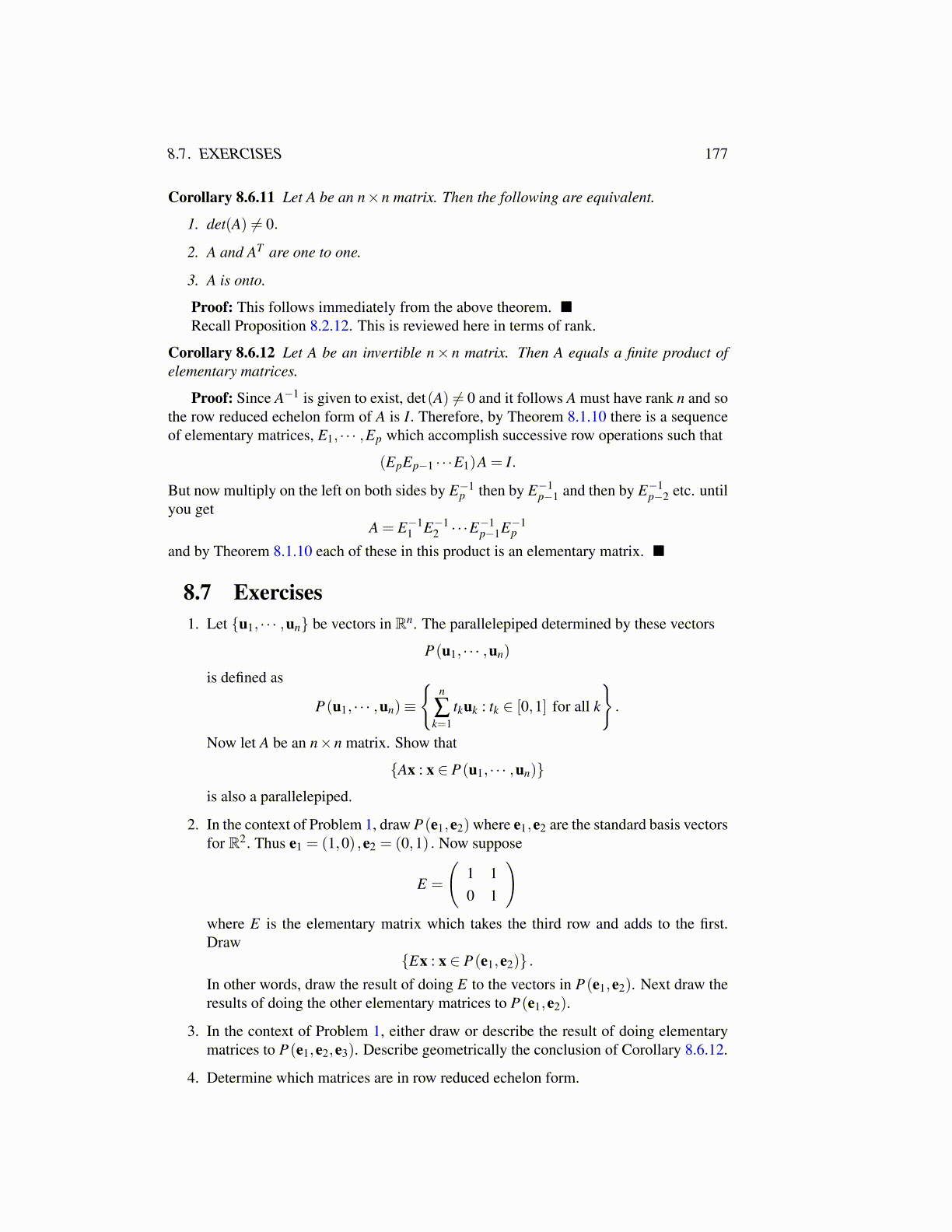
8.7. EXERCISES 177
Corollary 8.6.11 Let A be an n×n matrix. Then the following are equivalent.
1. det(A) ̸= 0.
2. A and AT are one to one.
3. A is onto.
Proof: This follows immediately from the above theorem. ■Recall Proposition 8.2.12. This is reviewed here in terms of rank.
Corollary 8.6.12 Let A be an invertible n× n matrix. Then A equals a finite product ofelementary matrices.
Proof: Since A−1 is given to exist, det(A) ̸= 0 and it follows A must have rank n and sothe row reduced echelon form of A is I. Therefore, by Theorem 8.1.10 there is a sequenceof elementary matrices, E1, · · · ,Ep which accomplish successive row operations such that
(EpEp−1 · · ·E1)A = I.
But now multiply on the left on both sides by E−1p then by E−1
p−1 and then by E−1p−2 etc. until
you getA = E−1
1 E−12 · · ·E
−1p−1E−1
p
and by Theorem 8.1.10 each of these in this product is an elementary matrix. ■
8.7 Exercises1. Let {u1, · · · ,un} be vectors in Rn. The parallelepiped determined by these vectors
P(u1, · · · ,un)
is defined as
P(u1, · · · ,un)≡
{n
∑k=1
tkuk : tk ∈ [0,1] for all k
}.
Now let A be an n×n matrix. Show that
{Ax : x ∈ P(u1, · · · ,un)}
is also a parallelepiped.
2. In the context of Problem 1, draw P(e1,e2) where e1,e2 are the standard basis vectorsfor R2. Thus e1 = (1,0) ,e2 = (0,1) . Now suppose
E =
(1 10 1
)where E is the elementary matrix which takes the third row and adds to the first.Draw
{Ex : x ∈ P(e1,e2)} .In other words, draw the result of doing E to the vectors in P(e1,e2). Next draw theresults of doing the other elementary matrices to P(e1,e2).
3. In the context of Problem 1, either draw or describe the result of doing elementarymatrices to P(e1,e2,e3). Describe geometrically the conclusion of Corollary 8.6.12.
4. Determine which matrices are in row reduced echelon form.